Cloud Security Posture Management
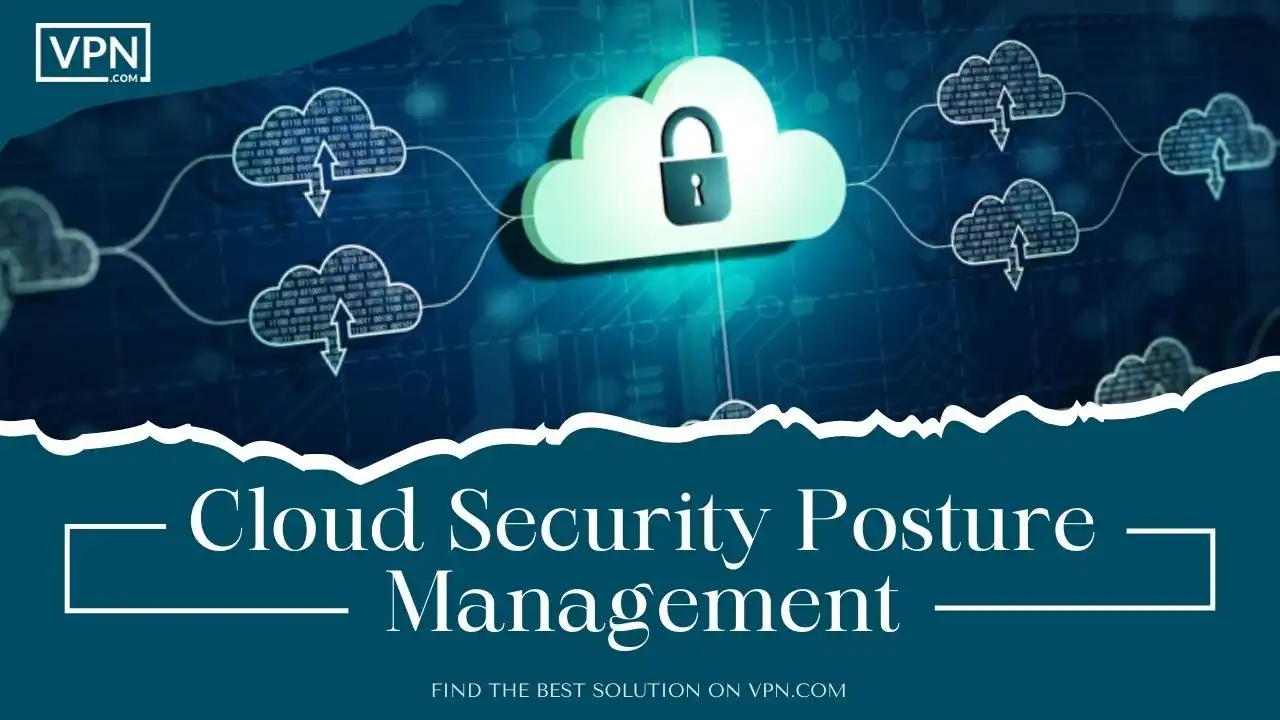
Do you want to use a public cloud securely? Well! You are not the only one concerned about cloud security in this digital landscape. Companies now use public clouds to run applications and IT services quickly. But with this speed comes new risks. Cloud servers and databases spin up fast – but often get configured insecurely in the rush. This leaves easy openings for hackers to steal data or disrupt services. Companies need special security tools that can move and adapt as fast as their clouds do.
Tools designed to set the right security controls on resources just as effortlessly as IT teams can launch new infrastructure. With this type of cloud guardrail in place, companies can keep innovating rapidly on public clouds without leaving the doors wide open for cyberattacks in the process. Technologies called Cloud Security Posture Management (CSPM) do this job well. They bring order to complexity so companies can adopt clouds safely while building the future on top of them. Let’s dive into the details of CSPM!
What is Cloud Security Posture Management?
As more companies use public clouds like AWS, Azure, and Google Cloud, they need to make sure their data and applications are properly secured. Cloud providers secure the underlying servers and networks, but customers must configure security settings on the specific resources they create. Misconfiguring these complex settings is the #1 cause of cloud security incidents.
Cloud Security Posture Management (CSPM) is a set of software tools and processes companies use to strengthen the protection of their cloud resources. Cloud Security Posture Management solutions provide complete visibility into the security settings across all types of cloud services and resources. They automatically check for misconfigurations based on best practices and company security policies.
When risky settings are detected, the CSPM platforms can fix issues or alert security teams.
By using CSPM, companies can spot problems like open databases, over-permissioned users, and assets left running that are no longer needed. This helps prevent data breaches, hacking attacks, and failing compliance audits. It also reduces costs by identifying resources that can be turned off safely. Maintaining a proper security posture lets companies utilize clouds securely while enabling business innovation.

Our #1 Rated Monitoring Service
- 24x7x365 multi-cloud security
- Security Assessment & Remeditation
- DevSecOps
- Cloud Disaster Recovery
Why Do Misconfigurations Occur?
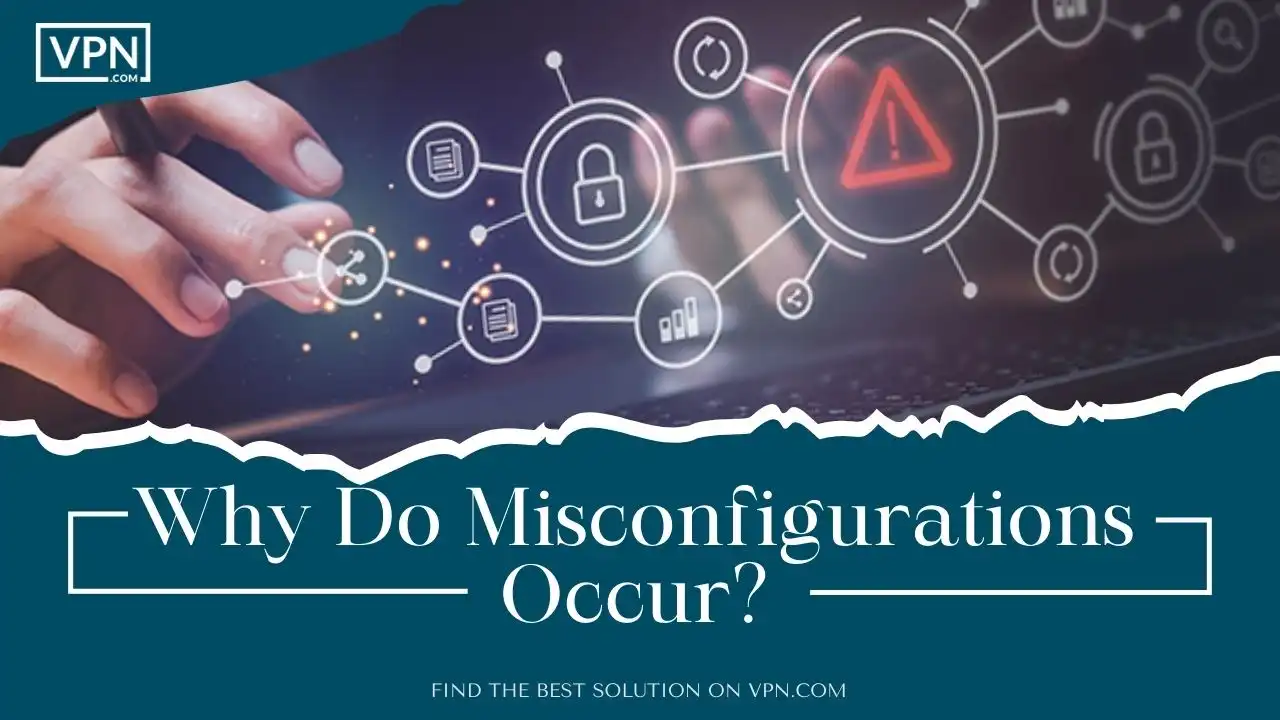
Misconfigurations represent one of the most significant threats to cloud security today. Studies show that 70-99% of cloud breaches stem from preventable misconfigurations rather than sophisticated attacks.
Several factors drive misconfigurations:
Complexity
Using multiple cloud platforms from AWS, Microsoft Azure, Google Cloud and more creates complexity. There can be dozens of interconnected settings across cloud servers, databases, storage, and networking that security teams must configure and manage correctly. This complexity leads to missteps and gaps that attackers exploit. Companies need specialized tools to automate security management across multi-cloud environments.
Automation Gaps
Many companies rely on manual processes instead of automated cloud-native tools. But cloud environments change rapidly. Humans can’t keep up with manual processes. Automated configuration monitoring and policy enforcement are essential to lock settings securely. Legacy on-premises tools also don’t work well in clouds. Companies end up with blindspots that allow misconfigurations when they lack automation.
Talent Shortages
Cloud infrastructure takes different skills than on-premises systems. Most IT teams lack adequate cloud security training that aligns with modern platforms and best practices. Companies struggle to hire and retain specialist cloud architects and security engineers. Knowledge gaps result in accidental misconfigurations until robust cloud training programs mature.
Compliance Struggles
Standards like HIPAA, PCI DSS, and ISO 27001 are defined for on-prem data centers. But cloud infrastructure evolves minute-by-minute. Environments never stand still. This fast pace of change causes companies to fall out of compliance when they lack automated monitoring and policy enforcement aligned with cloud-focused regulations.
Tech Sprawl
When departments launch new cloud projects without coordination, it drives complexity. Allowing uncontrolled provisioning results in unused old servers, databases with overly broad access, fake test accounts left enabled, etc. These accumulate into hidden costs, security holes, and compliance failures across ever-expanding attack surfaces.
Inconsistent Standards
When each team uses its own security rules, misconfigurations emerge. Clear company-wide cloud security policies and automated guardrails must be applied consistently across groups via centralized policy management platforms purpose-built for hybrid multi-cloud environments.
As organizations operate more systems in the cloud, these factors will drive higher rates of preventable misconfigurations unless addressed through posture management disciplines.
Understanding Cloud Security Risks
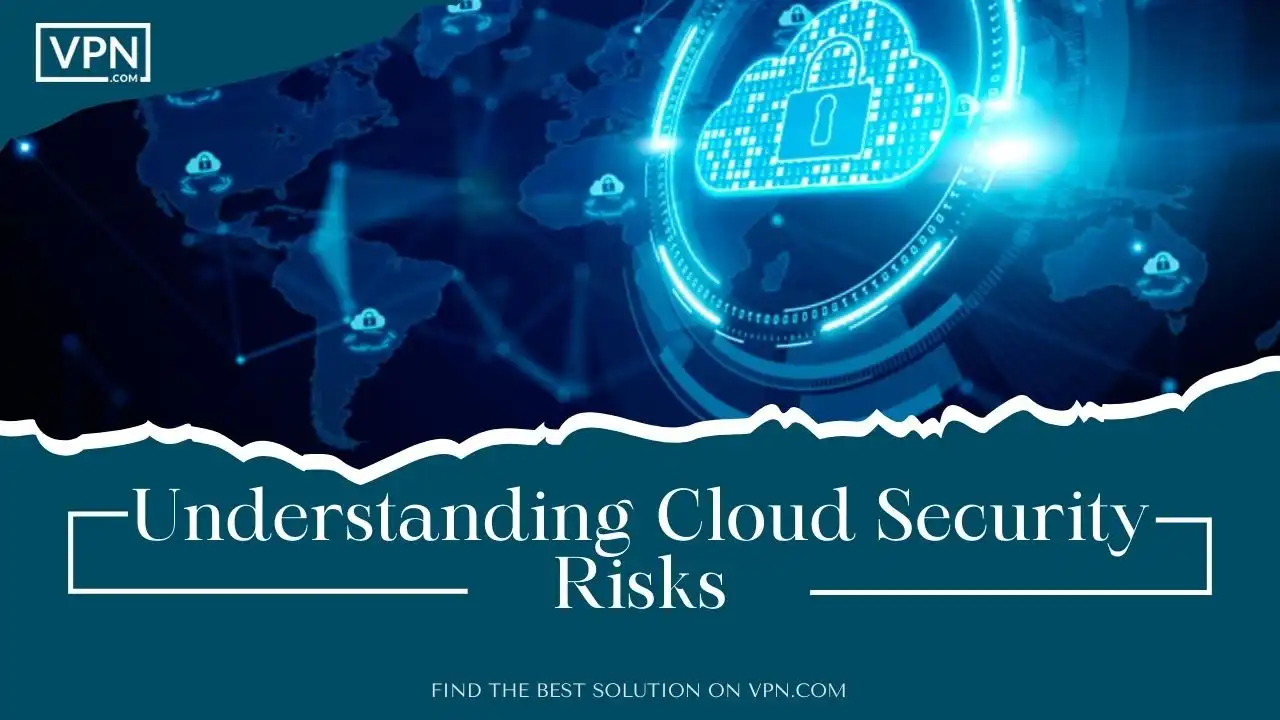
To appreciate the importance of Cloud Security Posture Management, it helps to understand common cloud security risks:
Data Breaches
Mistakes in configuring cloud databases and storage buckets often leave sensitive data exposed. Errors like allowing public access or applying weak passwords let unauthorized users steal regulated customer, financial, healthcare, or intellectual property records. Attacks bypass encryption and other protections when misconfigurations override security best practices.
Service Disruption
Companies rely on cloud availability zones, auto-scaling groups, load balancing, and other redundancy tools to ensure 24/7 application availability according to SLAs. Misconfiguring these complex continuity safeguards causes unexpected outages that impact business operations and revenue. Human mistakes when setting up cloud data centers quickly cascade into widespread problems.
Insufficient Identity Controls
Access mistakes like overly broad user permissions, unused service accounts, unrotated passwords, unsecured access keys, etc., enable insider threats from compromised cloud accounts. Bad actors exploit these identity and access errors to gain footing in cloud environments and then escalate privileged access to steal data or disrupt services.
Falling Out of Compliance
Dynamic cloud infrastructure drifts out of compliance quickly when security settings remain static. Monitoring tools must continually audit cloud configurations against standards like HIPAA, PCI DSS, and ISO 27001 to avoid violations and penalties. Complex distributed cloud resources make manual compliance audits impossible across fast-changing hybrid environments.
Increased Costs
IT teams need to pay more attention to unused cloud servers, idle databases, over provisioned storage, and orphaned resources that unnecessarily drive up costs. Expanded attack surfaces also result when leftover assets stay insecurely configured. Finding and cutting neglected waste requires complete visibility across cloud environments.
Hacker Exploitation
The above risks give hackers pathways to penetrate defenses and achieve objectives like data theft, service disruption, and credential compromise. Their methods excel at identifying and then exploiting simple cloud oversights via automated tools. Undetected blindspots allow attackers to pivot between resources and accounts while escalating access.
Why is CSPM So Important?
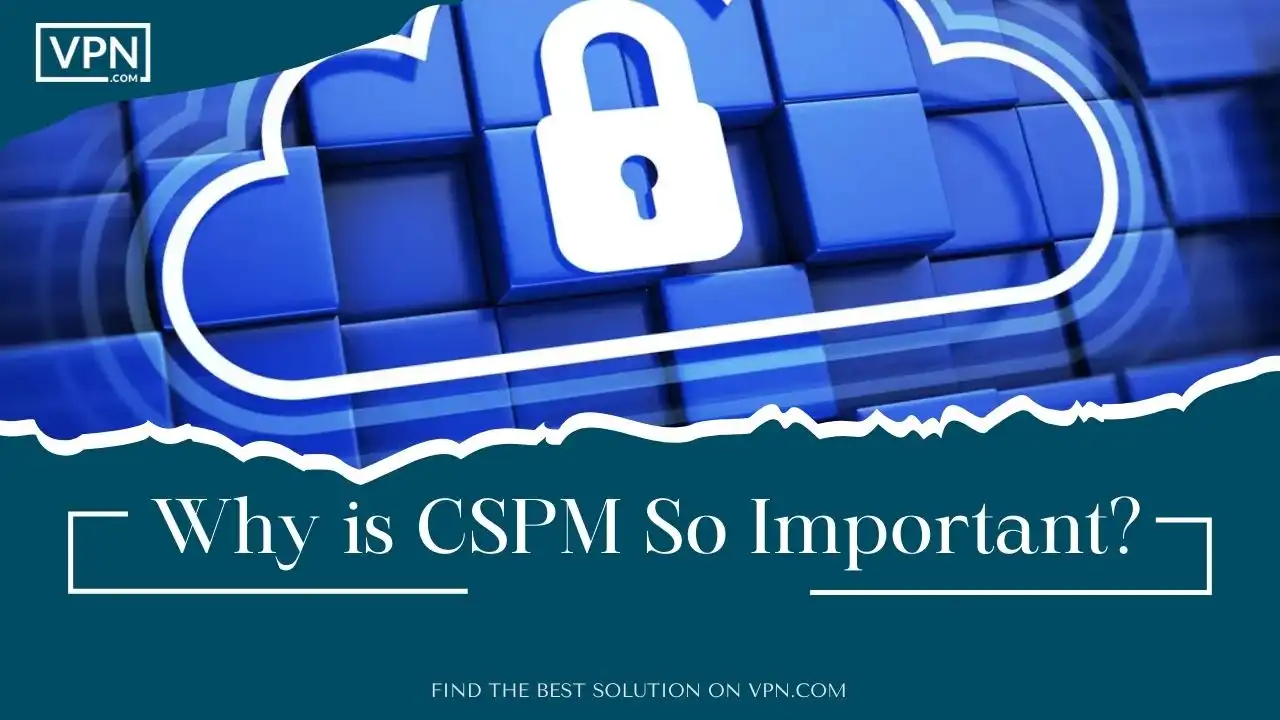
Maintaining awareness of the state of security controls across hybrid and multi-cloud environments is only possible with tooling purpose-built for cloud complexity. Evolving regulations also mandate evidence of strong security oversight.
Native cloud security tools only go so far. They secure the cloud provider’s physical infrastructure and offer some identity and access features. However, customers remain responsible for properly configuring hundreds of complex settings on the virtual resources they create and consume.
Cloud infrastructure and container security tools also have huge gaps in coverage. Focus areas like network security, vulnerability management, and workload protection remain oblivious to missteps in broader resource configurations.
Only a unified CSPM approach can provide comprehensive visibility with the automation and analytics needed to prevent cloud misconfigurations at scale.
Top drivers making CSPM critical:
Dynamic Environments
Cloud platforms evolve minute-by-minute as companies automatically scale servers, storage, and services to meet changing demands. Point-in-time audits can’t keep pace. The second an audit ends, new resources with nested settings are spun up and configured based on templates. Misconfigurations easily slip in unchecked. Continuous visibility and automated policy enforcement are imperative to secure relentless change velocities across cloud infrastructures.
Exploding Complexity
Large enterprises now run 500+ distinct cloud services spanning software, infrastructure, platforms, containers, and more. Each carries dozens of granular settings for security, access, network routes, encryption, logging, and redundancy. Even simple buckets and databases have over 100 configuration options tuned for performance, cost, and protection. Keeping multi-cloud straight manually is impossible with such intricate sprawl. Automation by cloud-native security tools has become mandatory.
Compliance Mandates
Industry regulations like SOC2, ISO 27001, PCI DSS, and HIPAA now specify clear standards for securing the cloud alongside on-premises systems. Mandatory controls range from regular audits to access restrictions on sensitive data. These regulations are updated continuously to address cloud-specific oversight challenges related to change velocity, perimeter erosion, and shared responsibility. Lacking documented compliance results in fines or lawsuits when violations occur.
Shared Responsibility
Hyperscale cloud providers physically secure data centers, servers, and core networking. But customers must configure security controls, access permissions, encryption settings, etc. on the virtual cloud resources they operate atop these infrastructures. Failure to uphold customer duties leaves gaps attackers exploit to breach cloud-hosted data and applications using compromised accounts or misconfigurations as attack vectors.
Only robust CSPM approaches help organizations address these factors and demonstrate compliance. However, not all solutions are created equal.

Our #1 Rated Monitoring Service
- 24x7x365 multi-cloud security
- Security Assessment & Remeditation
- DevSecOps
- Cloud Disaster Recovery
What Are The Key Features of CSPM?
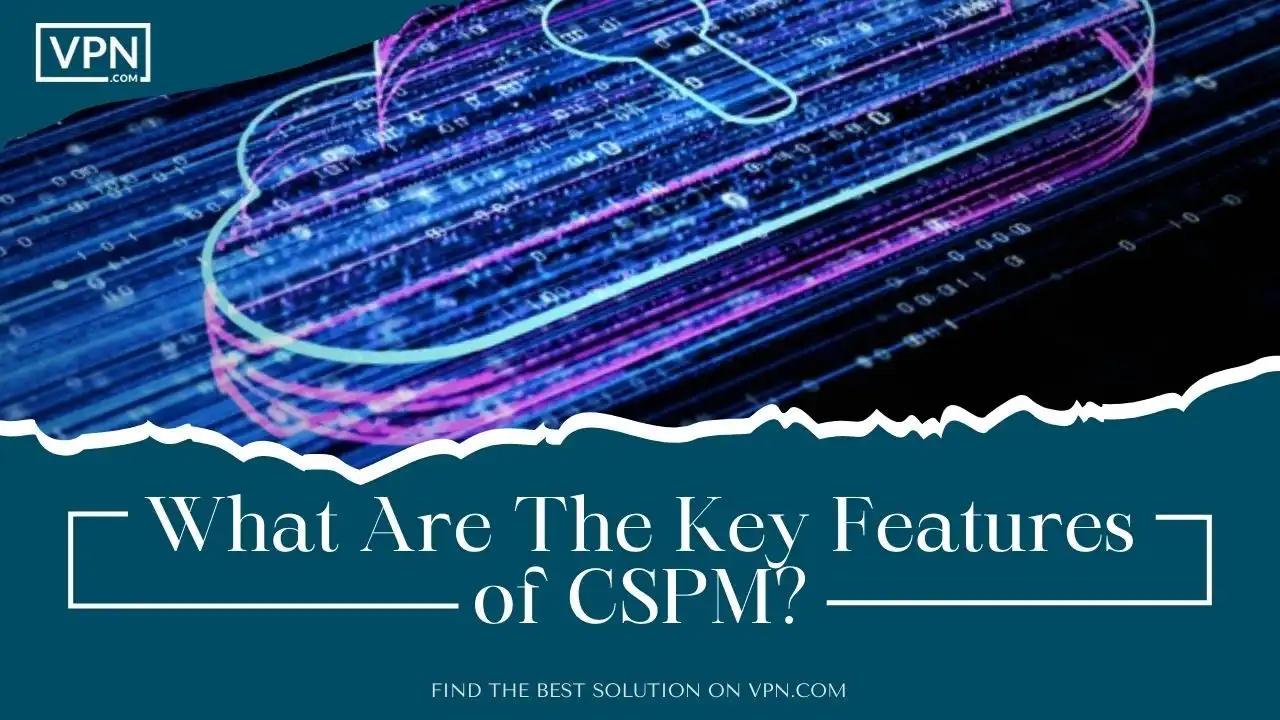
Compliance Assurance
Dashboards continuously monitor adherence to regulations like SOC2 and ISO 27001, plus best practice frameworks like CIS Benchmarks across hybrid clouds. Mapped controls provide evidence for auditors. Alerts notify teams of drift from compliant configurations or newly released standards.
Security Optimization
Analytics compares provisioned cloud permissions, computing capacity, and retention policies against actual usage over time. Recommendations help turn off unnecessary resources that bloat costs and attack surfaces. Optimization shrinks risk exposure based on business needs.
Advanced CSPM solutions further bolster security with capabilities like embedded cloud security posture assessments, prioritized risk findings, and auto-remediation of common misconfigurations.
The key is choosing a platform flexible enough to enforce policies at cloud accounts, resource groups, or individual resource levels while aligning different projects and lines of business with organization standards.
Benefits of Cloud Security Posture Management
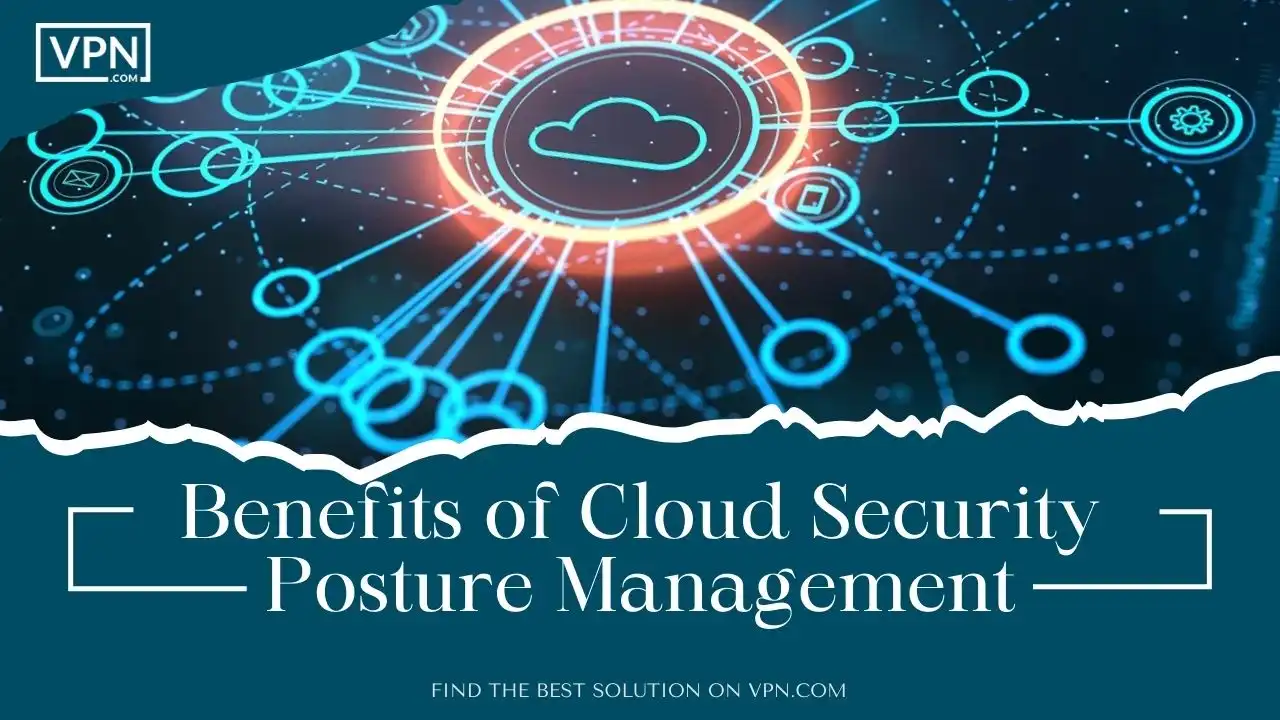
Organizations invest in CSPM to realize several advantages:
Improved Security
Misconfigured cloud settings pose the largest threat to organizations today by enabling data breaches plus outages that disrupt operations and violate compliance rules. CSPM platforms continuously monitor configurations using automated policies that reflect security best practices and internal standards. Any high-risk settings get flagged instantly for teams to remediate proactively. Embedding guardrails and safety checks across cloud projects reduces employee mistakes that lead to incidents. The result is vastly improved security against preventable threats born from complexity, gaps in skills, and fast-paced change.
Risk Reduction
Cloud sprawl leaves companies with hidden, unused resources that bloat costs and insecurity when left unaddressed. CSPM analytics shine a light on unnecessary assets and overly permissive settings across multi-cloud users, data, apps, and APIs. Mapping these relationships uncovers excessive risks related to insider access, redundant remote access portals, zombie cloud servers awaiting abuse, and roles allowing dangerous combinations of cloud permissions. Armed with objective data ranking risks, administrators can quantifiably cull cloud attack surfaces to match business needs.
Compliance Assurance
Dynamic clouds that constantly scale and adapt resources make manual governance and compliance audits futile exercises. CSPMs embed controls for HIPAA, GDPR, PCI DSS, and SOC2 within policy engines. Automation monitors configuration drift continuously to avoid falling out of compliance. Auditors also have access to on-demand evidence reports mapping infrastructure against regulations to demonstrate diligent governance. This reduces audit effort and provides proof of effective oversight for partners/customers.
Operational Efficiency
CSPM correlation analysis gives response teams accelerated root cause analysis by visually mapping security events against cloud changes and administrative actions across time. Integrated cloud security posture management solutions also auto-generate prioritized incident tickets, including detailed asset and configuration context, to start remediation workflows faster with less manual research needed upfront.
Cost Optimization
Analytics compares cloud permissions, computing capacity, and data retention policies against actual business usage, spotlighting where resources exceed current needs. Turning these off-cuts cloud bills by 10-30% in some cases without negatively impacting security or performance. Optimization thereby pays direct dividends to cloud ROI and total cost of ownership.
Cloud Governance
Flexible policy engines encode company security standards, regulations like HIPAA, and best practices like CIS Benchmarks as code guardrails that reduce reliance on error-prone manual governance. Templates allow centralized policy administration with decentralized enforcement spanning business units and cloud projects, aligning global security objectives with local oversight autonomy.
How Cloud Security Posture Management Works?
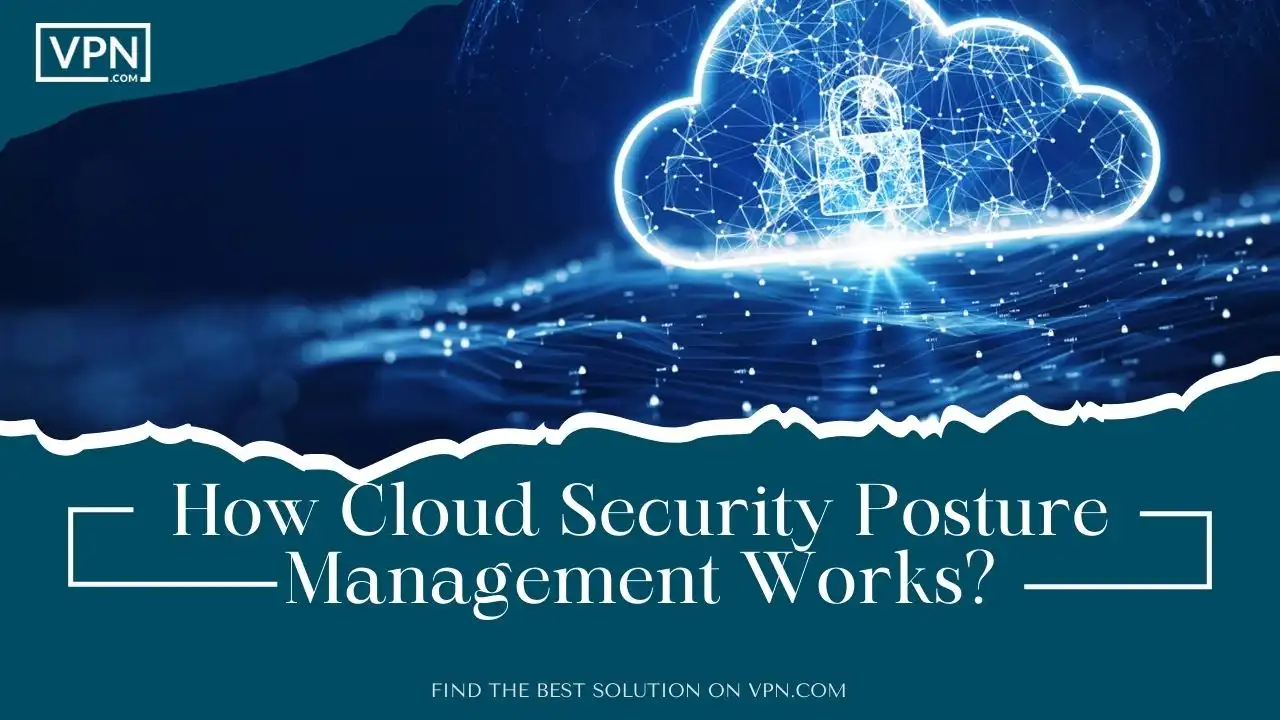
CSPM solutions utilize different techniques to gain visibility and control:
API Connectors
CSPM engines connect with cloud provider APIs to ingest configuration data across infrastructure like virtual servers, storage, databases, networking, and more. Streaming changes in real-time from the native control planes allows continuous monitoring without performance impact. Broad API coverage spans AWS, Azure, Google Cloud, and other major platforms to consolidate visibility.
SaaS Integrations
Leading posture management tools further integrate with SaaS platforms like Office 365, Salesforce, Box, and G Suite via APIs. This expands visibility into security settings and user activities across cloud apps that hold sensitive data. API connections adapt as vendors update services to maintain uninterrupted visibility.
Cloud Accounts and Roles
Administrators grant CSPM solutions access to cloud accounts, groups, and roles in order to monitor designated scopes, resources, and teams. These permissions allow policy engines to scan configurations without excessive privilege. Selective access improves security while ensuring tools only impact authorized environments per governance guidelines.
Configuration Scanning
Lightweight agents deployed on cloud servers, containers, and serverless functions provide additional visibility where API limitations exist. Agents dynamically audit operating system-level controls plus apps like Kafka, Cassandra, and MongoDB off the grid. Scanning identifies risks from credential files, platform misconfigurations, exploitable vulnerabilities, and malicious activities across IaaS/PaaS.
Resource Discovery
Analytics automatically discover all cloud accounts, resources, and dependencies to construct real-time topology maps. Visual relationship mapping links configurations, identities, and activities to accelerate root cause investigation and simplify policy targeting. Dynamic views help capture reliable baseline drift detection.
Policy Templates
Policy engines encode regulations, compliance mandates, and security best practices as codes for standards like SOC2, ISO 27001, PCI DSS, and CIS Benchmarks. Templates allow fast centralized policy targeting across cloud accounts with embedded controls that automate remediation procedures back into compliance.
Auto Remediation
CSPM policies continuously check configurations against the rules. When violations occur, automated playbooks resolve common issues like overly permissive identities, unprotected storage buckets, and insecure database settings. Automation reduces delays in waiting on manual remediation.
Combined, these capabilities provide comprehensive visibility with policy guardrails to lock down cloud security postures organization-wide.

Our #1 Rated Monitoring Service
- 24x7x365 multi-cloud security
- Security Assessment & Remeditation
- DevSecOps
- Cloud Disaster Recovery
Differences between CSPM and other cloud security solutions
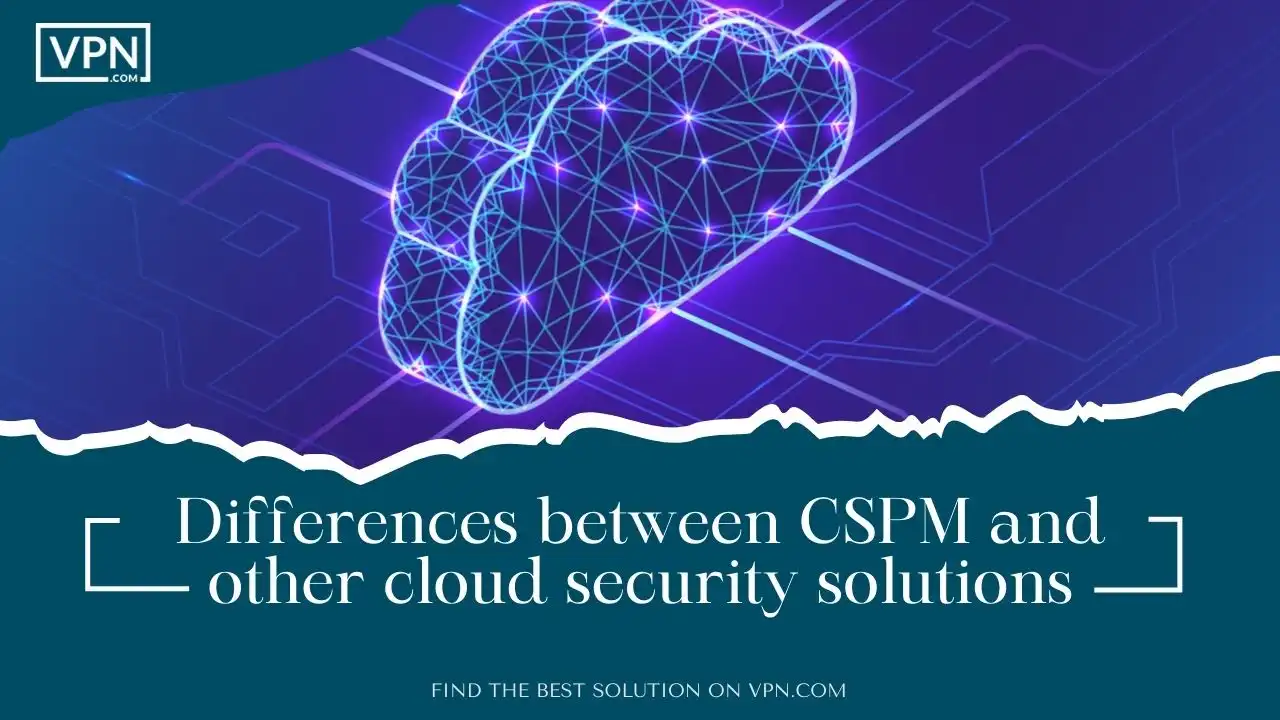
Common solutions like Cloud Security Access Brokers (CASBs), Cloud Workload Protection Platforms (CWPPs), and Infrastructure as Code (IaC) scanners take narrow views into limited slices of cloud environments.
CASB
Cloud Access Security Brokers focus narrowly on securing risky data transactions in SaaS applications. Their inline proxies monitor and control user sessions in high-risk apps like Office 365, Salesforce, and Box to prevent suspicious downloads or uploads based on content inspection. However, CASBs lack visibility into broader resource configurations, identities, and activities across the cloud infrastructure underpinning these apps. Blindspots persist around associated servers, databases, object stores, and CDNs where data eventually resides.
CWPPs
Cloud Workload Protection Platforms concentrate on application security controls and vulnerability management at the individual server/container level. CWPPs enforce secure configurations, monitor traffic patterns, and detect malware on cloud virtual machines. But they ignore risks emerging higher up the stack – account permissions, software flaws in managed services, authentication policies across directories and trusts. CWPPs also don’t correlate across workloads.
IaC Scanners
Infrastructure as Code tools analyzes provisioning templates and recipes to discover misconfigurations or policy violations before engineers deploy cloud resources. This shifts security left. However, flaws still slip in during late-stage customization or drifting post-deployment. IaC scanners also don’t verify if stacks actually get built as designed. Limited risk coverage leaves gaps.
CSPM Platforms
In contrast, CSPMs take a top-down approach that continuously monitors security configurations across cloud identities, data, workloads, networks, and managed services. Comprehensive visibility combined with embedded compliance rule engines provide guardrails against preventable missteps enterprise-wide. CSPMs embed security deep into multi-cloud foundations.
Implementing Cloud Security Posture Management

Organizations should consider several best practices when launching a CSPM program:
Define Policies
Document the specific regulatory, legal, and industry standards and internal business requirements that cloud configurations must support. Detail technical security guidelines aligned to these mandates down to precise settings across accounts, data, identities, networks, and workloads. This foundational mapping provides policy development guardrails.
Assess Existing State
Discover all cloud services and assets currently deployed across the enterprise. Catalog configurations, permissions, and redundancies to establish accurate baselines. Identify shadow IT or abandoned projects. Comparing legacy environments against policies quantifies risks for prioritized mediation planning.
Classify Data and Apps
Conduct data classification and workload assessments to categorize precise sensitivity levels of information and runtime requirements of applications handled in cloud environments. These help tier policy strictness appropriately by workload criticality. Context aids policies in preventing overcorrection that impacts operations.
Focus Quick Wind
CSPM policies that provide the fastest, highest value risk reduction should get prioritized first. Low-effort automation for widespread risks around unprotected data, broad identity permissions, and porous network controls offer big protection gains with minimal disruption during initial adoption.
Tune Alerting
Too many alerts overwhelm security teams, delaying critical response. Carefully enable notifications for the riskiest violations based on verified incidents and threats intelligence to cut noise. Integrate and correlate alerts into SIEM cloud dashboards, ITSM systems, and communication platforms teams already use daily.
Standardize Controls
Centrally modeling company standards, regulations, and best practices as policies encoded under version control unifies cloud security across distributed, autonomous teams. Infrastructure-as-code promotes collaboration on guardrails between security architects and project engineers, launching new cloud initiatives and services.
Report Metrics
Measure cost savings, policy coverage, and risk reduction benchmarks over time. Report program progress via executive and board-level dashboards to maintain leadership support and alignment with business goals as cloud posture management capabilities mature.
Retrain Regularly
Refresh administrators, developers, security analysts, and general staff continuously around secure cloud best practices aligned to company policies via classroom and online education. Require certifications validating skills. Update training as threats evolve.
Combining these steps helps optimize posture management capabilities that evolve alongside business cloud maturity.
FAQs
Who oversees CSPM strategies?
Cloud security teams typically manage posture management programs, but collaboration with cloud infrastructure and engineering groups is essential for sustainable success and effective remediation.
What training do staff need?
Cloud architects, administrators, and security analysts all require cloud security training for major platforms like AWS and Azure. Certifications like the AWS Security Specialty and Azure Security Engineer Associate demonstrate cloud security skills.
How is CSPM adoption prioritized?
Begin with cloud accounts running sensitive workloads or regulated data to maximize risk reduction. Expand controls to lower security environments next. Adding CSPM across newly provisioned cloud projects should become mandatory.
What is the difference between CSPM and CSA?
Cloud Security Assessments (CSAs) involve periodic audits and penetration testing to provide point-in-time visibility into risks. Continuous CSPM solutions deliver the constantly updated visibility required for dynamic cloud environments through automated policy enforcement. Both can be useful, but frequent manual assessments fail to address cloud velocity and complexity.
How does CSPM integrate with other tools?
Leading CSPM solutions integrate with SIEMs like Splunk for automated alerts. Orchestration tools like ServiceNow enable seamless ticketing and workflows to accelerate response. Tools like cloud infrastructure entitlement managers and identity governance platforms maximize the value of reciprocal capabilities.

Our #1 Rated Monitoring Service
- 24x7x365 multi-cloud security
- Security Assessment & Remeditation
- DevSecOps
- Cloud Disaster Recovery
Conclusion
There is no doubt that companies now bet their futures on cloud innovation. But with opportunity comes responsibility. Every day, news breaks of preventable data leaks, hacks, and meltdowns from simple cloud missteps. What assurance exists that as organizations accelerate into the cloud, they don’t introduce business-ending risks in the process?
Modern solutions now provide that assurance. Cloud Security Posture Management (CSPM) solutions shed light on the security configurations and compliance of cloud resources, giving teams total visibility and control. With robust CSPM practices in place informing administrators, security teams, and executives of potential issues in real time, organizations can fully utilize the convenience of cloud services while ensuring they don’t introduce additional risks to the business. Maintaining strong security postures aligns cloud adoption with business growth while meeting oversight obligations across regulated industries.
We hope that this overview clarifies key CSPM concepts helpful for determining how posture management practices might benefit your organization. Reach out to VPN.com for more specific guidance addressing your industry compliance mandates or hybrid and multi-cloud complexities.




